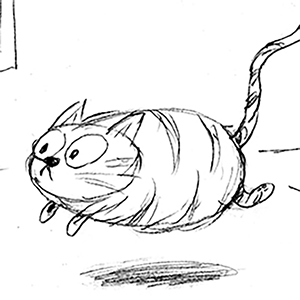California squirrels are now apparently hunting and eating other rodents
Published in News & Features
LOS ANGELES — A UC Davis study showed a nutty novel behavior in California squirrels: They're hunting like carnivores, taking down and then consuming other, smaller rodents.
As part of an ongoing 12-year study of California ground squirrels at Briones Regional Park in Contra Costa County, researchers last summer watched as squirrels began to chase — and eat — voles, a cousin of field mice.
This suggests squirrels are much more opportunistic in their diets than previously realized, wrote the authors of the study, published Wednesday in the Journal of Ethology. Squirrels typically eat acorns, seeds, nuts and fruit, but are known to occasionally eat fresh carrion or roadkill, insects, eggs or other discarded food. Some squirrels at California's college campuses have become infamous among students for their demanding behavior, even winning student elections, but they've never been seen hunting smaller rodents on such a widespread scale.
"This was shocking," said lead author Jennifer E. Smith, an associate professor of biology at the University of Wisconsin-Eau Claire. "We had never seen this behavior before. Squirrels are one of the most familiar animals to people. We see them right outside our windows; we interact with them regularly. Yet here's this never-before-encountered-in-science behavior that sheds light on the fact that there's so much more to learn about the natural history of the world around us."
A video released by researchers shows a ground squirrel grabbing a vole by its neck and shaking it back and forth — clear predatory behavior meant to quickly kill prey, said Dan Blumstein, a professor of ecology and evolutionary biology at UCLA who studies marmots, a related species of large ground squirrel. In squirrels, most biological dietary factors, such as their teeth and stomachs, are adapted for vegetation such as nuts and seeds, not meat, he said.
Blumstein, before reading the details of the study, thought that the carnivorous behavior might have been isolated to female squirrels desperate for the nutrients needed to feed their young. But according to the study, the behavior was found in male and female squirrels across age groups. They displayed other behavior typically associated with predators: When one squirrel would successfully hunt down prey, another squirrel would sometimes try to steal it from the hunter.
"I could barely believe my eyes," said Sonja Wild, a postdoctoral research fellow at UC Davis who co-led the project alongside Smith. "From then, we saw that behavior almost every day. Once we started looking, we saw it everywhere."
The study authors posited one theory as to this previously unseen squirrel behavior: A boom in the local vole population — tracked by the crowdsourcing website iNaturalist — might have led the squirrels to take advantage of an available source of prey.
"The fact that California ground squirrels are behaviorally flexible and can respond to changes in food availability might help them persist in environments rapidly changing due to the presence of humans," Wild said.
Alice Morris, a graduate student at the University of Idaho that researches Idaho's threatened ground squirrel population, said she'd never seen this type of behavior in her observations and was surprised by the study's findings. Friends and family texted her about it multiple times Wednesday, she said.
Rising temperatures from climate change can cause disruptions in ecological food chains, according to the National Wildlife Federation. A lack of proper vegetation could cause smaller species to die out, leaving larger predators wandering into unfamiliar habitats to look for reliable food sources.
"Squirrels are really excellent examples of how animals can adapt to changing conditions," Morris said.
©2024 Los Angeles Times. Visit at latimes.com. Distributed by Tribune Content Agency, LLC.







Comments